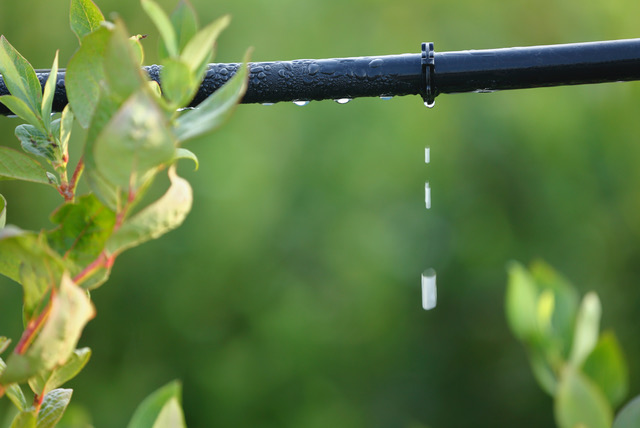Written By Melissa Cooper- Sustainable Living Certification Course
Temperatures will soon start hitting the 30’s and if you haven’t drought proofed your garden it’s not too late to start.
My garden was well mulched in autumn, with pea straw and sugarcane mulch, providing a deep layer of protection over the soil for winter.
Now it is time to check how far this layer has broken down. If the layer is too thin it will not provide any resilience against the heat of summer. Soil will start drying out too quickly and the garden will suffer if I don’t use plenty of water. I don’t use town water (except under unusual circumstances) and I know I have a limited supply in our tanks. These tanks add up to about 7,000 litres.
Sounds like a lot but lack of rain and heat will soon see the levels drop quickly. I have never needed anymore because I drought proof my garden.
This is the most sustainable way that we are all going to have to learn for the future.
I still have all the veggies growing in the garden and my potted kitchen garden is much used through the warm months. I’m looking forward to feeding my family as much as I can from my garden this Christmas.
Get on your hands and knees (if necessary – I do!) and feel how thick the mulch is. If you can dust the mulch around and expose the soil easily you need to add more mulching layers. Before you do this give the soil a deep watering or do it straight after good rain.
Trees, particularly fruiting trees are the bones of your garden and should be the first plants to get your watering attention. If they go downhill it is very difficult to bring them back to good, productive health. They need consistent watering while they are growing and bearing fruit. Allot them the first of your precious tank water.
When planting out for summer make sure you are choosing the correct seasonal varieties. Growing winter veggies in the heat will make them do poorly, use way too much water and bolt to seed before you’ve had a chance to get any produce.
When the garden needs to be watered there are better ways to do it.
- Water in the morning. Plants resist the heat when they are well hydrated. If you wait till the evening to water the cell walls may well be too dehydrated to come back. Afternoon watering is the quickest way to see yellowing leaves on the bottom of your bushes.
- Watering in the morning allows plenty of time for the excess water to dry from the leaves. This will prevent or at least minimise fungal issues like Powdery Mildew.
- Water in a gentle, slow manner. Water needs to soak into the soil as it will not do it quickly. When it rains really hard you can see water running off the grass and down the road pretty fast. This sort of rain is only good for filling up water tanks. Ideal watering is a gentle rain for at least 1 hour. The trick is to replicate that artificially. Drip irrigation systems are highly efficient at dispensing water. They need regular checking to make sure they aren’t blocked etc.
- Watering in a slow manner means the water will soak downwards wetting the entire root ball and even a bit further. This encourages the roots to stay down in the ground far away from the surface. This is ideal as the surface soil is very prone to heating up and drying out.
- Hand watering a garden is fraught with problems. It is exceedingly difficult to maintain consistency and it is almost impossible to stand there watering a plant in a gentle manner for a long enough time.
- Using a sprinkler/drip system on a gentle flow for half an hour, once per week, seems to get my veggies growing quite well.
- Watering your pots is an entirely different story. The plants have their entire root system in one area. If you let this soil dry out the plants have no-where else for the roots to get water from, so this often causes death.
- I water my pots about 3 times a week in the warmer weather. If it is really hot, I will check on the pots that have a small amount of soil as they will suffer first.
- The potting mix that you use is also crucial to keeping plants alive and growing well. An indication of how good your potting mix is, is price. Cheap potting mix is nasty! I will never skimp on potting mix, it’s just not worth it.
- Get potting mix with the Australian Standard Red ticks on the bag. There are organic varieties around.
Prevention is the key to watering correctly. Be aware of the up coming weather patterns. If you know we are going to have 3 days of scorching sun, wait till the day before and give the garden a really good soaking. This is the best use of a precious resource.
Mulch, mulch, mulch! Did I mention mulching??? Mulching puts a protective layer over the soil which prevents the excessive, wasteful and unnecessary water loss from the soil.
Enjoy your garden through summer by knowing you have the skills to water sustainably.


